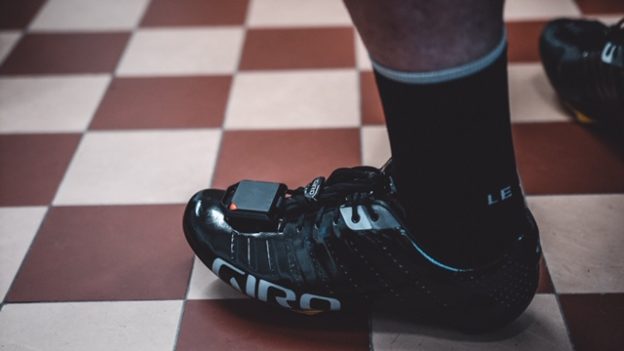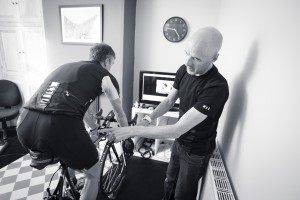This is about Leomo’s Type S. A pocket-sized, high-tech measuring gizmo with bike fitting application that landed in the office a couple of weeks ago.
First though, some background.
And a contradiction.
Fitting is not about numbers. It’s about people, with all their individual physical and morphological idiosyncrasies, and their personal interactions with their bicycle.
Yet most fitters, and I include myself in this, start their education by trying to adhere, at least to some degree, to some arbitrary measurements, usually centred around a rider’s knee angle.
Why? Because it’s the only way the bicycle industry can package their fit training into a digestible, six to 12 hour, teaching pill they can dispense to shop staff around the globe.
Numbers are relatively easy to pass on, quickly. Understanding takes longer.
It’s an approach that does work, especially when it starts to dovetail with a broader base of experience.
It can also lead fitter and client down some blind alleys.
Gradually, my own protocol has diverged to the extent that those ‘traditional’ joint angle numbers, however they are measured, are not a major consideration, at least not in the sense that I’ll spend time chasing them.
Instead, informed compromises are driven by support, stability, symmetry, balance, technique and smoothness.
A neutral solution that puts quality of movement above quantity of movement.
Which brings me back to Leomo.
Yes, it’s five motion sensors – usually placed on shoes, thigh and sacrum, each containing a three-axis gyroscope and a three-axis accelerometer – track range of motion.
But they also track the velocity – and effectively the smoothness and efficiency – of a rider’s movements in real time.
It’s probably as close as we can get to objectively quantifying that quality of motion, particularly around the foundation stones of any fit: the feet and the pelvis.
The data generated by the pelvic sensor – which provides real-time assessment of both rock and rotation, as well as angle – may end up being a bit of a gamechanger.
It’s also the only system you can actually take for a ride on the road, opening the door to a level of real-world fit data we’ve never had before.
Two of the more inquisitive World Tour riders – Lotto’s Grand Tour workhorse Adam Hansen, who has knocked out a nine hour ride with a Leomo, and World TT champion Rohan Dennis – are using it in exactly that way.
Hansen, who is now helping Leomo to advance their technology, has also delivered a couple of detailed web-based seminars which are worth a watch:
Of course, the skill remains in the interpretation of information and deciding how to act on it.
I’d also contend that you don’t necessarily need Leomo to establish a solid baseline fit.
But assessing how performance-orientated riders react to very small changes when you’re trying to eek out those final few percentage points of improvement can be highly subjective.
Potentially, Leomo makes those choices data-based and much, much more objective.
We’ll be adding Leomo as a ‘bolt on’ option to our existing fit services very soon, as well as offering follow up sessions for existing clients who already have a solid benchmark position.
So if you’re serious about trying to be the best you can be, get in touch.



